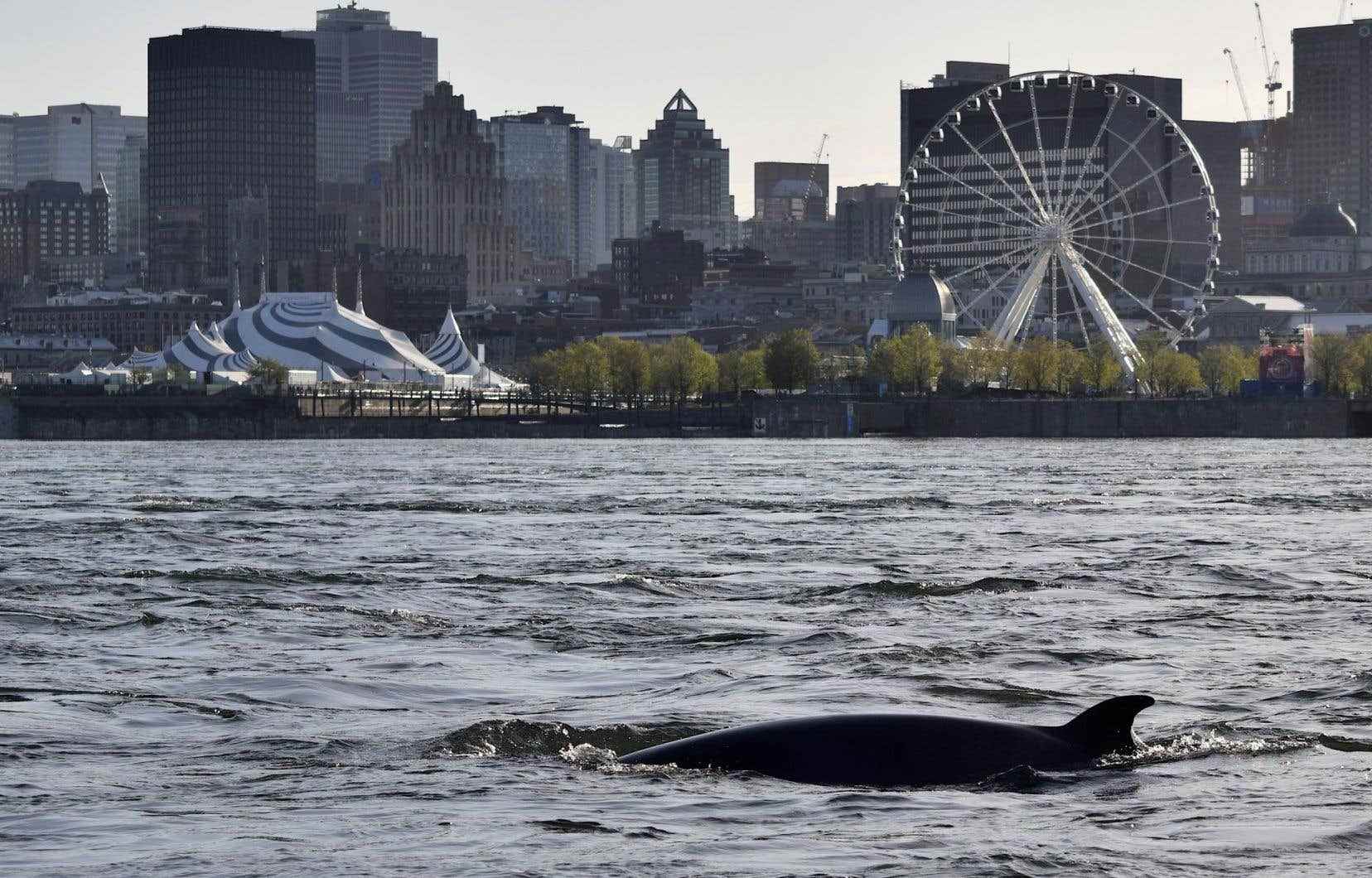Completely unprecedented situation, a second minke whale arrived in Montreal on Wednesday, learned The duty. The animal, which would also be a juvenile, has been observed a few times in the St. Lawrence River, going up along the island of Montreal. It could therefore end up in the same area as the other minke whale that has already been present for a few days.
According to information obtained Wednesday afternoon, this new case of a lost minke whale was reported first in the Bécancour sector, then in Varennes. This animal, which would be a young cetacean, was therefore potentially heading in the same area as the 2020 humpback whale, but also as the minke whale already present since last Sunday. For example, it could be found in the Le Moyne channel, or in the portion of the river between Île Sainte-Hélène and Île de Montréal.
The Group for Research and Education on Marine Mammals (GREMM) has confirmed to To have to that it is indeed another minke whale, since the one already observed was still in the same area on Wednesday morning, i.e. along the shore of Île Sainte-Hélène, near the Three Discs sculpture by Calder . At this place, as in the Le Moyne channel, where he was on Monday, the whale was swimming against a strong current.
calf
The first images of the new cetacean lost 450 kilometers from its natural habitat indicate that it would swim completely normally, but also that it could be a minke whale barely a few months old.
You should know that calves of this species separate from their mother after barely a few months of breastfeeding. It therefore sometimes happens that juvenile individuals go astray. In 2016, then in 2017, cases of dead young minke whales were documented in the Lévis region.
There has never been, in the entire history of Montreal, a documented case where two whales were in the region at the same time. In the past, there have been documented cases of belugas, but also that of the famous humpback whale observed for more than a week in 2020. The latter attracted the curious, in particular because of its many spectacular jumps out of the water. ‘water. She was eventually found dead in the seaway, where there is heavy merchant ship traffic.
No intervention
For the moment, the strategy remains the same for the two whales in the Montreal region, indicated the scientific director of the GREMM, Robert Michaud. There is no question, for the moment, of intervening to try to frighten or capture this cetacean of at least four meters swimming freely. However, it is planned to monitor the situation, in particular to prevent boats from disturbing these animals.
As for the first minke whale, observed for the first time last Sunday, Mr. Michaud said he was surprised by the physical strength of this young cetacean, which has been swimming in the area for at least four days.
To hope to return to their natural habitat, the St. Lawrence estuary, these minke whales would have to turn around and go back down the seaway for several hundred kilometres, through the intense commercial traffic on the river.
The species is well known in Quebec, since it is very frequently observed in summer in the Estuary and Gulf of St. Lawrence, and particularly in the Saguenay–St. Lawrence Marine Park. The minke whale is not a species at risk, since it would number several hundred thousand individuals worldwide. Japan and Norway also hunt the species on a commercial basis, despite an international moratorium on whaling.
More details will follow.
